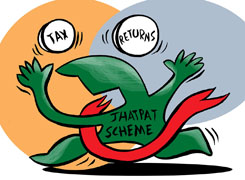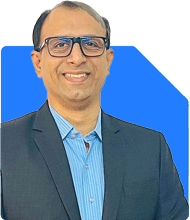Tejas Chokshi | Answer |Ask -Follow
Tax Expert - Answered on Apr 25, 2023
He is an information system auditor, a forensic auditor and concurrent bank auditor.
Chokshi, who has a master’s degree in management, audit and accounting from Gujarat University, has completed his CA from the Institute of Chartered Accountants of India.... more

Is standard deduction applicable for all salaried and pensioners irrespective of their tax slab under new tax regime or it is available for more than 15.5 lacs?
You may like to see similar questions and answers below
Mihir Tanna |1089 Answers |Ask -Follow
Tax Expert - Answered on Feb 15, 2023
Mihir Tanna |1089 Answers |Ask -Follow
Tax Expert - Answered on Feb 27, 2023
Mihir Tanna |1089 Answers |Ask -Follow
Tax Expert - Answered on Feb 28, 2023
Sanjeev Govila | Answer |Ask -Follow
Financial Planner - Answered on Feb 08, 2023
Mahesh Padmanabhan | Answer |Ask -Follow
Tax Expert - Answered on May 26, 2023
Dr Dipankar Dutta |1837 Answers |Ask -Follow
Tech Careers and Skill Development Expert - Answered on Dec 05, 2025
Dr Shyam Jamalabad |108 Answers |Ask -Follow
Dentist - Answered on Dec 05, 2025
Dr Shyam Jamalabad |108 Answers |Ask -Follow
Dentist - Answered on Dec 05, 2025
Dr Shyam Jamalabad |108 Answers |Ask -Follow
Dentist - Answered on Dec 05, 2025
Dr Dipankar Dutta |1837 Answers |Ask -Follow
Tech Careers and Skill Development Expert - Answered on Dec 05, 2025
Ulhas Joshi |280 Answers |Ask -Follow
Mutual Fund Expert - Answered on Dec 05, 2025
Dr Dipankar Dutta |1837 Answers |Ask -Follow
Tech Careers and Skill Development Expert - Answered on Dec 04, 2025
Ravi Mittal |676 Answers |Ask -Follow
Dating, Relationships Expert - Answered on Dec 04, 2025
Anu Krishna |1745 Answers |Ask -Follow
Relationships Expert, Mind Coach - Answered on Dec 04, 2025
Anu Krishna |1745 Answers |Ask -Follow
Relationships Expert, Mind Coach - Answered on Dec 04, 2025



























